Since the beginning of the last decade, Irish companies’ involvement in the space sector has risen by more than 300%. This rapid ascent was achieved from a solid launchpad: Ireland draws upon a 40-year history in semiconductors, telecommunications, and advanced materials. Many founders and leaders of start-ups and technology firms working in the space sector gained valuable experience in those industries.
There are more opportunities than ever to become involved in this industry. A report from KPMG has forecast the growing commercial space sector to expand from €348 billion in 2020 to €1 trillion by 2040, driven by factors including increased private investment and falling spaceflight costs.
The technology to gather and analyse data from satellites in low Earth orbit and analyse it has become more mainstream, leading to a wide range of downstream applications including secure communications, AI-driven Earth observation, analysing supply chains by tracking cargo ships from space, producing highly accurate meteorological and ocean data, or observing crop yields.
“In 2010, there were around 30 space-active companies in Ireland. Today, that number has grown to 116. It’s a significant expansion, across both multinationals and SMEs, and companies like Ubotica and Innalabs are now recognised leaders in their fields,” says Conor Sheehan, deputy head of Ireland’s delegation to the European Space Agency (ESA).
Viasat, which has had a European software centre of excellence in Dublin since 2018, has projects in satellite broadband connectivity and partnerships with several EU groups. The international aerospace and defence group Nammo’s Irish operation supplied rocket components to the Ariane 5 and 6 launches.Ireland’s long standing reputation for attracting multinational companies has led to groups based here becoming active in the space sector.
Analog Devices, whose operation in Limerick dates back to the 1970s, is Ireland’s participant in a European-wide project in microelectronics and communication technologies intended to advance innovation throughout the EU. This both showcases Ireland’s capability in the semiconductor industry, which the Irish Government has designated as a strategic area, and opens up potential applications in the space sector, where chips are a critical component.
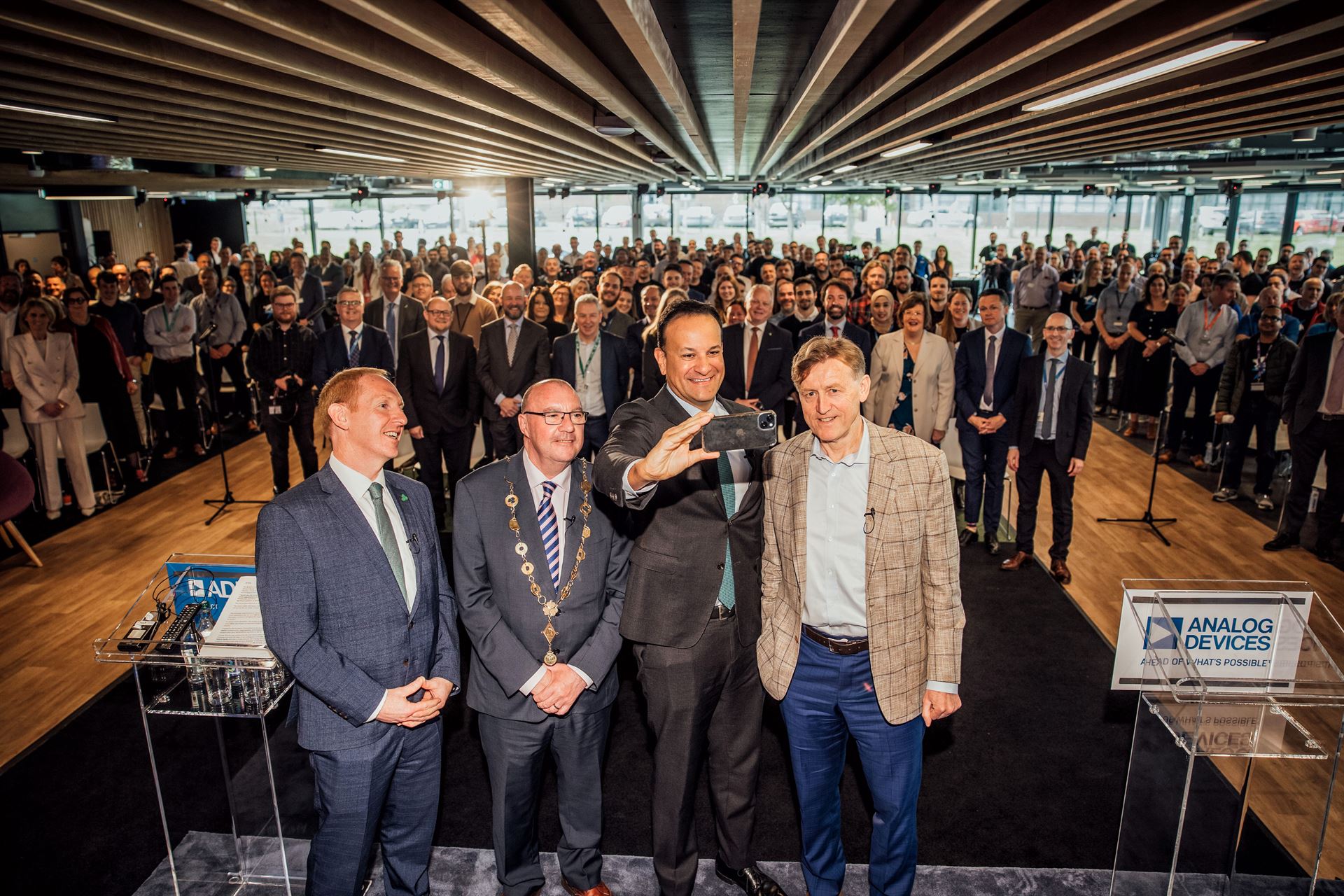 ESA membership opens doors to innovation
ESA membership opens doors to innovation
Ireland was a founding member of the ESA and this involvement opens doors to technical and market knowledge. The ESA actively funds research and development projects, and many Irish companies got their start in the sector by developing technology through its co-funded programmes. They are then able to turn this technology into a commercial product with other applications.
Adapting terrestrial technologies for space
“Our approach isn’t about building a standalone space sector: we see space as a high-value market vertical. Working with ESA, essentially our national space agency, technologies developed for terrestrial use are adapted for space, and in turn, those innovations often find new applications back on Earth,” says Sheehan.A small country on the Western edge of Europe, a long way from Cape Canaveral, Ireland might seem an unlikely location for space activity. Yet MBRYONICS CEO and co-founder John Mackey believes it’s the combination of related industries, built up in the country over time, that gives it an edge. “Ireland hosts the largest semiconductor footprint in all of Europe, it’s a world leader in packaging and testing of advanced photonics, and it’s a world leader in medical devices. The manufacturing talent and capacity is already proven in many critical sectors which are also critical for space, and it’s through the full value chain from academics to SMEs to multinationals based here. It’s quite unique in a European context, and that’s what has enabled us to scale manufacturing capability and capacity here in the west of Ireland.”
Both involve high-quality skilled manufacturing for devices that must be 100% reliable, whether they’re used in a patient’s body or deployed in space. And sometimes the materials developed for medical use have a second application.The connection between medical devices and the space industry is closer than many might realise.
ENBIO is an Irish biotechnology company that developed a way to apply synthetic bone coatings to orthopaedic and dental implants. It turns out this material is also useful for protecting probes in space from extreme radiation and heat of up to 1,000 degrees Fahrenheit.
The joint NASA-ESA Solar Orbiter, launched in 2020, had 20 per cent of its surface area coated in SolarBlack, which kept the probe’s delicate components at room temperature while absorbing heat as it flew close to the sun. And that wasn’t the only Irish involvement in the mission: Captec, a Dublin-based software company, provided independent software verification and validation for the Solar Orbiter’s critical onboard software. Trinity College Dublin and the Dublin Institute for Advanced Studies received ESA funding of €965,000 to support the development of imaging software for the spectrometer/telescope imaging x-rays instrument onboard.
This crossover between Ireland’s background in medical device production and the space industry is just what ESA Phi-Lab Ireland is set up to work on. In May 2025, Irish Manufacturing Research (IMR) in collaboration with AMBER and Enterprise Ireland, launched the lab as a centre for space research. IMR and Amber, based in Trinity College Dublin, both originally developed their capability in medical devices before extending this to the space sector, says Tristan McCallum, engineering technologist with IDA Ireland.
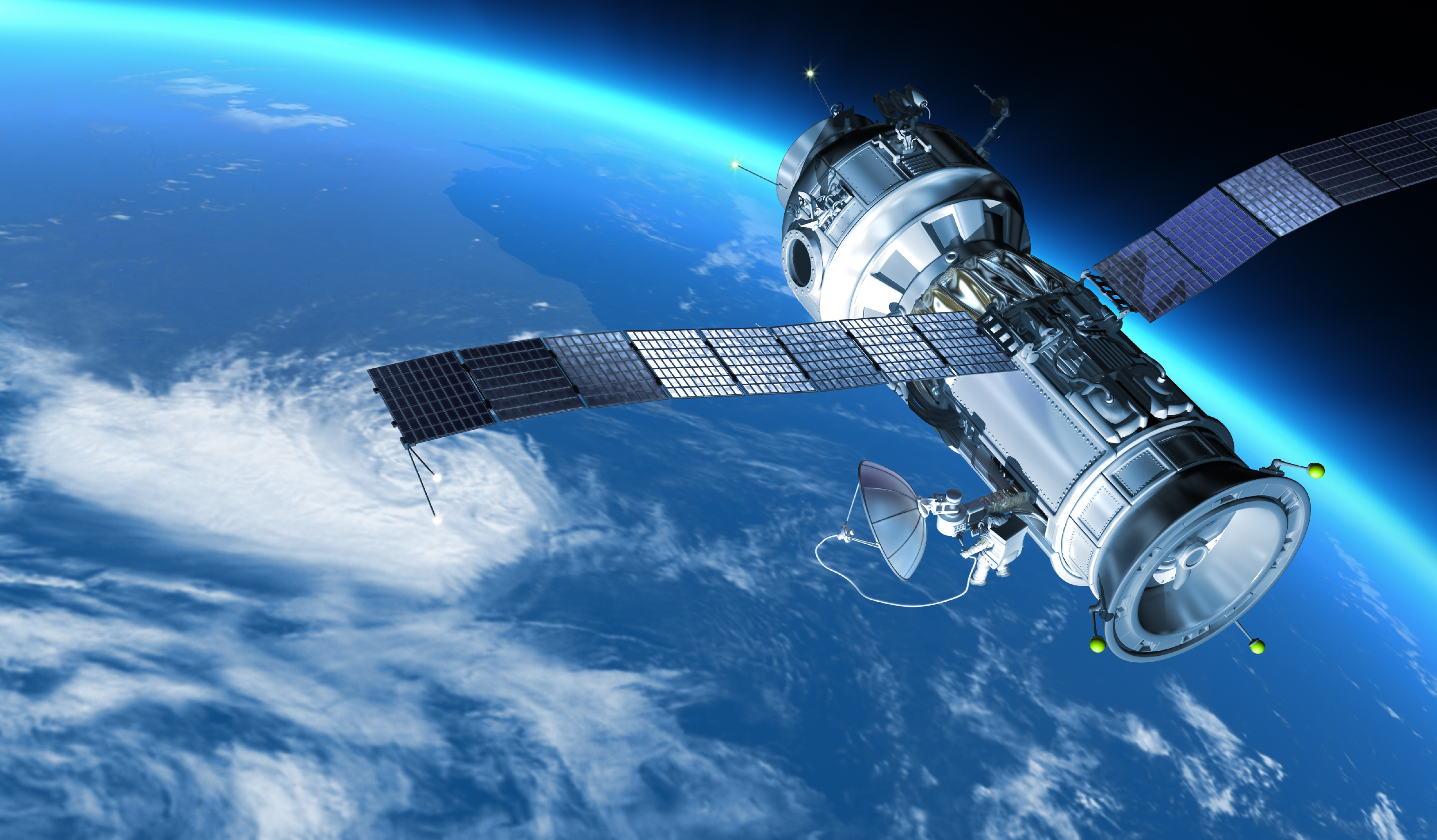.png)
Applying Irish communications expertise in space
As the space industry matures and more organisations get involved – particularly privately funded entities – the potential applications grow. Communication between satellites, and from space to Earth, takes on an even greater importance. Here again, Ireland’s heritage in Earth-bound communication technology has become an advantage in space.“Historically in Ireland, we had companies like Motorola in Cork, Ericsson in Athlone and Altobridge in Kerry – their cellular background is absolutely applicable to the satellite industry because of the overlap in areas like 5G non-terrestrial networks (NTN). So in Ireland there’s a lot of extremely good talent. They have the skills to understand telecoms, working to standards and how these systems are put together. We definitely have the skillset,” says Tim Moriarty, director within the global architecture team at ST Engineering iDirect.
Based in Killarney, county Kerry, ST Engineering iDirect (Ireland) established its presence in Ireland after it acquired intellectual property from locally based Altobridge. Its team of specialists, software developers, system architects, test engineers are experts in 3G, 4G and 5G and this happens to dovetail with recent trends in the space sector.
“The majority of the team are working on integration of satellite and cellular communications in 5G technologies and architectures for NTNs. There’s a trend in the industry for more standardisation and use of 5G architectures,” Moriarty explains.
ST Engineering works with satellite operators in the maritime and aeronautical industries, governments, and also works on projects for the ESA and the European Commission. Recent funded initiatives involved satellite and 5G integration as well as cyber resilience in satcoms – projects that involved collaboration of 20 organisations across 12 EU nations.
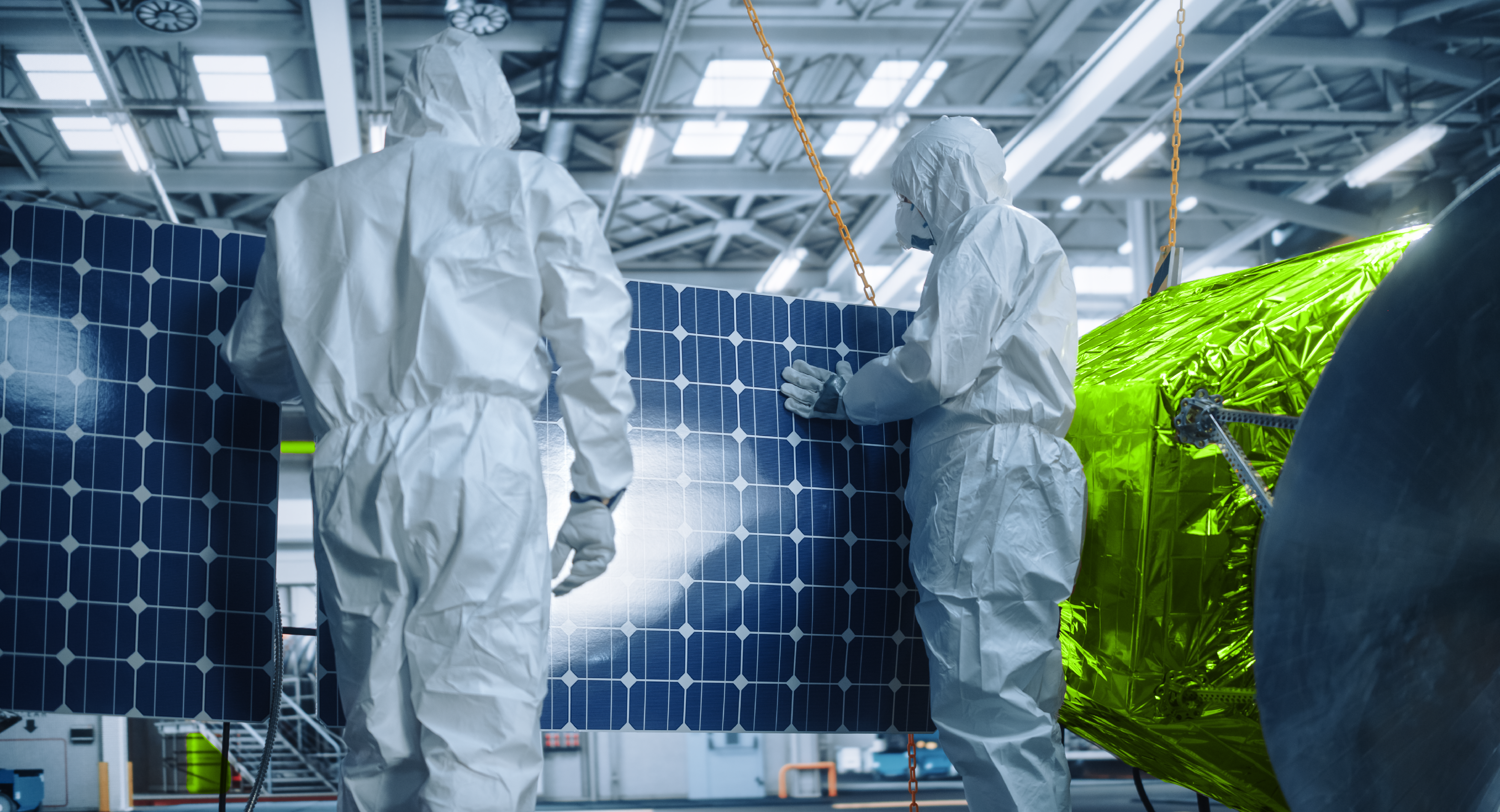
A shift from proprietary tech to standards
“Traditionally, satellite systems used proprietary protocols and hardware, installations were a closed shop. Now as satellite-ground infrastructure providers, we’re capitalising on everything moving to the cloud and becoming more standards-based.”In time, this will enable satellites to move beyond traditional satcom terminals to hybrid terminals and, ultimately, to communicate directly with a smartphone, tablet or other user device, bringing cutting-edge developments to the satellite communications industry. “We’re in the lucky position in the Killarney office that we’re considered a centre of excellence with 5G expertise and the satellite systems knowledge – we’re at the confluence of those two things. It’s a very exciting space to work with some real engineering challenges,” he adds.
Working on an ESA project in 2019 allowed MBRYONICS to develop core photonics technologies in-house, which was an important precursor to winning a landmark deal with the US Government agency DARPA, to enable satellites in low Earth orbit to communicate with each other using cutting-edge silicon photonics.
The opportunity came about at the time through Intel’s Irish operation which wanted to bid on a project, and made the initial introductions to DARPA in the US. “DARPA had never heard of us. They were blown away by what we were working on,” says Mackey. “It’s Irish technology enabling the internet in space and we’re absolutely proud of it. Between Intel Ireland, now Altera Ireland, a wholly owned Intel subsidiary, and MBRYONICS, it’s a full end-to-end Irish solution.”

Irish lasers on multiple satellites
MBRYONICS is in the process of establishing its pilot production facility in Galway, which will serve as a precursor to a large-scale manufacturing site set to be located in the west of Ireland, capable of producing thousands of units annually. “This is MBRYONICS 2.0: the industrialisation of getting our lasers onto as many satellites as possible,” Mackey says.Irish companies are good partners for space projects because they’re problem solvers by nature, adds Michael Martin, CTO with Réaltra Space Systems Engineering. Réaltra straddles two worlds: producing spacecraft hardware suitable for low earth orbit using commercially available off-the-shelf components more quickly and at a lower cost than if it was developed from scratch. At the same time, it’s also capable of building mission-critical systems for highly specific applications in space.
Dr Patten is part of a 25-strong team that has amassed an impressive list of achievements since it was founded just seven years ago. In 2023, it signed a €1 million contract with ArianeGroup to provide the next generation of European rocket launchers with important telemetry hardware.Few companies can say they have an astronaut on the payroll, but Réaltra can. Dr Norah Patten is set to become the first Irish woman in space next year, and her knowledge of space flight testing has been invaluable, says Martin.
“ArianeGroup wanted a video system for their new Ariane 6 launcher. With the support of Enterprise Ireland, we got that contract and the brief was: reduce the cost by 50%, reduce the time by 50%, and use as much off-the-shelf modern electronics as possible. And we achieved that,” says Martin.
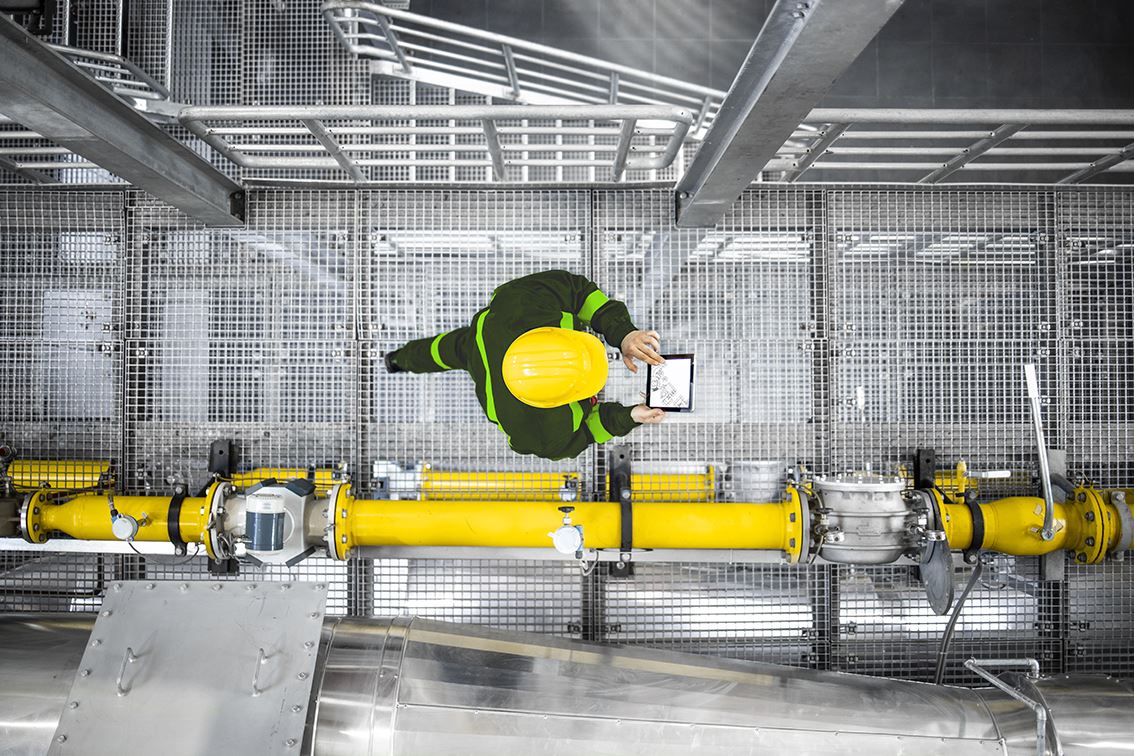 A key part in the most expensive satellite ever
A key part in the most expensive satellite ever
As a result of that success, ArianeGroup approached Réaltra a year and a half before the launch of the James Webb telescope, to adapt that video system to fly on the ArianeGroup 5 launcher carrying the telescope. NASA had originally mandated a very mature, stable rocket. “Then all of a sudden, ArianeGroup came to NASA and said: ‘we want to put a small Irish startup company’s video system a couple of metres away from the most expensive satellite ever launched’. So you can imagine the reaction of NASA to that,” Martin recalls.
The iconic images of the James Webb telescope deploying on Christmas Day 2021 was the first full high definition video transmission from space. “For a small Irish company to do that, changed everything,” Martin says.“We had to jump through an awful lot of hoops with the ESA and NASA and ArianeGroup to prove that the Réaltra system was safe to fly, wouldn’t damage the James Webb telescope, and would meet the requirements they had. And thankfully, we got through all of that successfully.”
Réaltra is now on the supplier list for Boeing and is positioned to work with other launcher companies. According to Martin, it’s helped by providing a complete turnkey avionics system. “For the ArianeGroup rocket, all they have to do is drill some mechanical holes, and they give us one line to switch it on and off, and we do the rest.”
Single supplier advantage
This means customers like ArianeGroup deal with one company for a key component, instead of managing the complexity of multiple suppliers and interfaces between their systems. “Larger companies’ expertise is in engines and structures. We can say: we’ll look after the avionics system for you, we can put in what you want and configure it whatever way you want. So we’ve developed a suite of products that can be a full turnkey system, or we can supply separate subsystems that are small, light and low cost.”Martin believes Réaltra’s size works in its favour. For one project, it developed a new camera to be placed inside a tank cooled at minus 250 degrees centigrade. “We had the first prototype built and tested before the client even had the project name signed off internally,” he says. “We’re seeing bigger companies coming to smaller, slim, agile SMEs to provide innovation for them.”
The reason for scaling is the estimated 60-80,000 satellites due to be launched over the next five to seven years, Mackey adds. That’s a combination of Government and commercial launches for applications like Earth observation to satellite broadband and the emerging area of communicating directly with phones and devices.
Optical telecommunications has taken off as a key area for space activity, because satellites need a way to communicate with each other and back to ground, wirelessly and with high bandwidth, for uses ranging from communications to sensing and earth observation. Pilot Photonics, a spinout of Dublin City University, has already had four contracts with the ESA, ranging from space science to telecommunications, and is about to embark on a fifth.
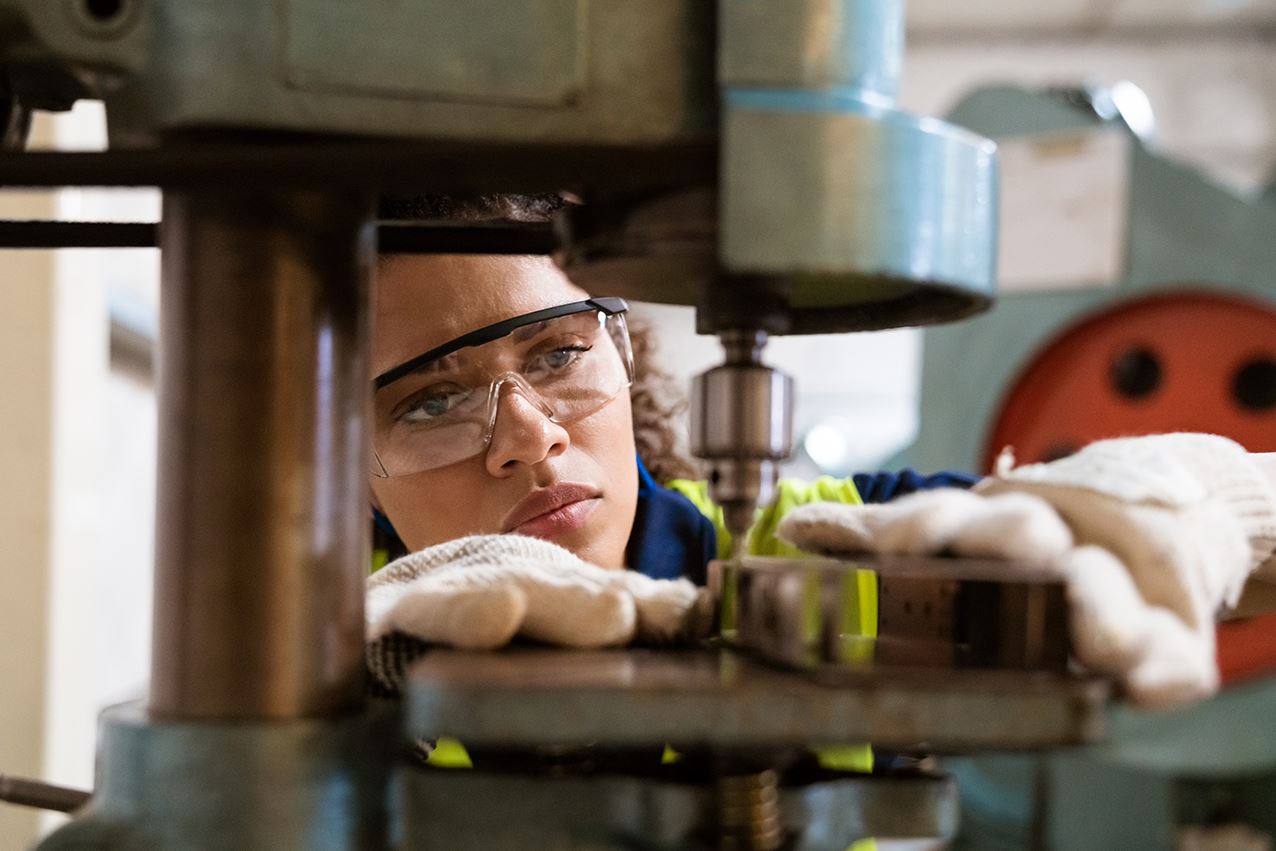
Partnerships key to Ireland’s space story
Partnerships are a key element in Ireland’s space sector, and Pilot Photonics is an example of this in practice. It has working relationships with many organisations in Ireland, from multinationals to local start-ups and the academic sector. Cadence Design Systems, which operates a global R&D centre in Cork, designs high-speed silicon chips but doesn’t have the in-house photonics expertise needed for future scaling. “They’re looking to companies like ours to integrate that into their roadmap,” explains Frank Smyth, CTO and co-founder of Pilot Photonics.From a research and academic collaboration perspective, Pilot Photonics is engaged with many Irish universities. “We have ongoing collaborations that we fund through Science Foundation Ireland with Tyndall National Institute, MTU and DCU and Trinity: four different projects focused on photonics and RF… that’s a clear part of the ecosystem that we benefit from. And we have a collaboration with MBRYONICS, who are even more space focused than we are: we have relevant technology overlap with them and we’ve had a few proposals together. There is a nice ecosystem in Ireland from a space perspective,” says Smyth.
In February 2025, the company attended Paris Space Week for the first time, exhibiting as part of the Irish Pavilion, and it won the PSW Innovation Challenge after giving a presentation on its Agile Optical Frequency Generator to a panel of judges.Like many Irish companies working in this field, Pilot Photonics can call on a roster of highly skilled staff: 50% of its team have PhDs.
Smyth points out that Pilot Photonics’ primary market is the telecoms and data centre but it’s always been very active in the space industry. For example, it has delivered technology to Airbus Defence and Space for its next-generation satellite payloads.
Mature technology vital for space breakthrough
“The space market is too far out when you’re young with new technology and new innovations. A technology needs to be very mature and very advanced and very well qualified before you can turn it into revenue in the space market. Without early-stage funding from the ESA, there would be no way to properly go after the space market,” Smyth says.Adds John Mackey: “To get a foot in the door of the US space market is a major accomplishment. You typically have to be the size of a company like Airbus. While Ireland’s space sector is rapidly growing, 10 years ago we were an early player. We were able to leverage the significant history and heritage in photonics at Tyndall and the applied optics group in Galway.”
IDA Ireland is encouraging its client base to get more involved in space-related projects. It is in the early stages of discussions with multinationals that, for example, can integrate AI with high volumes of data gathered from satellites in low earth orbit. “This is a new growth market. There are opportunities for the foreign direct investment companies to grow and support that and build on the capacity we have in Ireland,” says IDA Ireland’s Tristan McCallum.
“That is changing the game and now we’re seeing more companies develop and grow and our agency is there to help them. We see an opportunity to leverage the existing capability in Ireland to help companies that are active or interested in becoming active, in a way that mirrors the potential that we are now seeing. The potential growth in the new space sector is significant and increasingly it’s of strategic importance,” McCallum says.
ESA’s Conor Sheehan adds: “The space sector is growing rapidly, and we’re focused on forging partnerships between Irish SMEs and multinationals. Ireland has a strong vanguard of companies whose proven capabilities are opening new doors – both for themselves and for others following in their path. Some projects are still in development, but the opportunities are exciting, and they’re only possible through collaboration.”
.png?width=1440&height=auto&maxsidesize=1440&ext=.png)